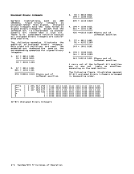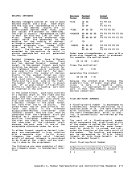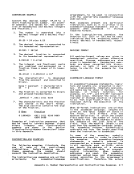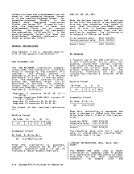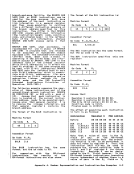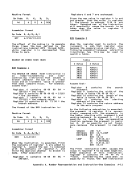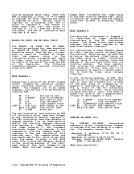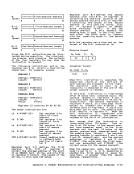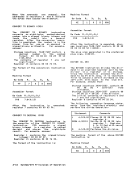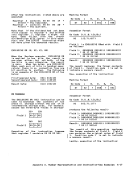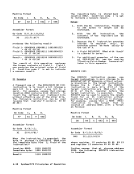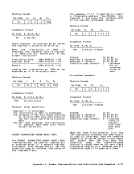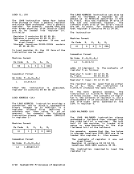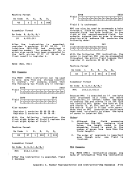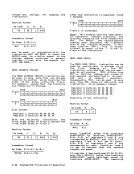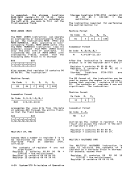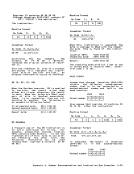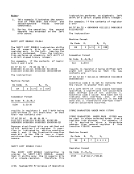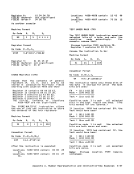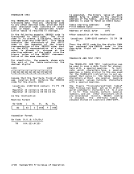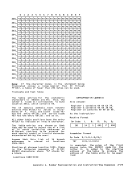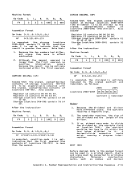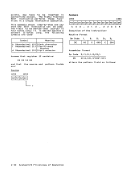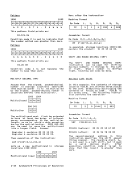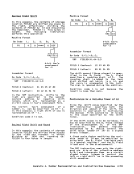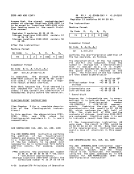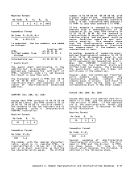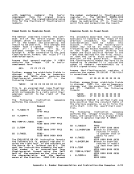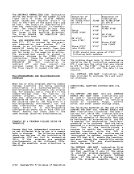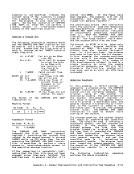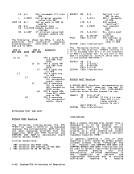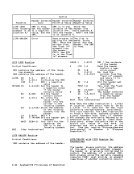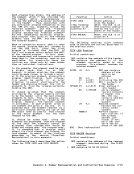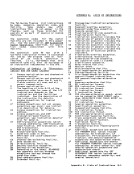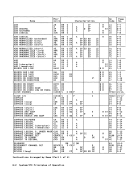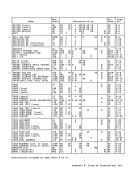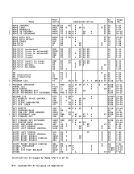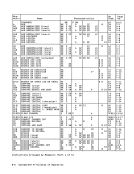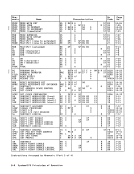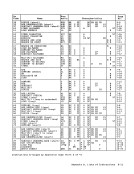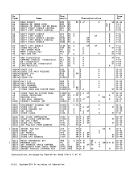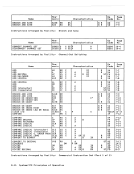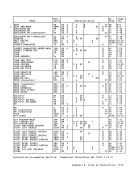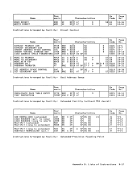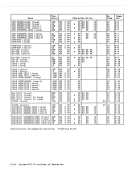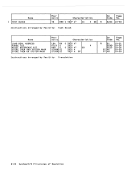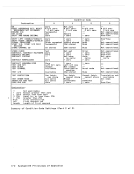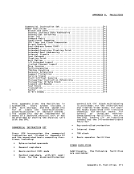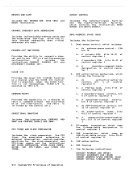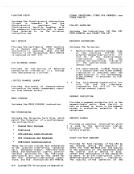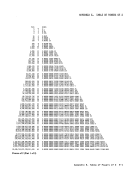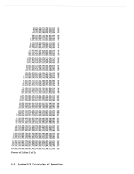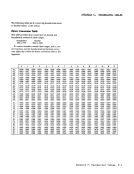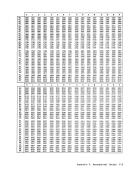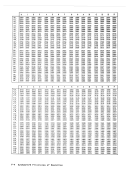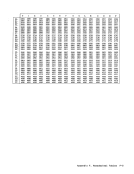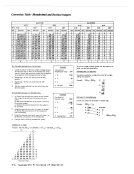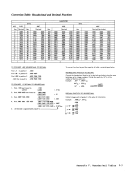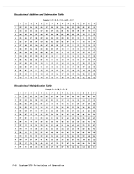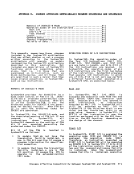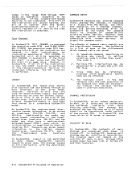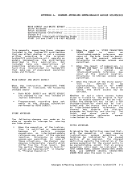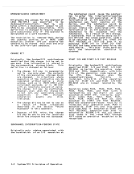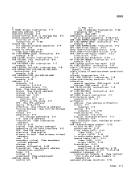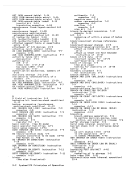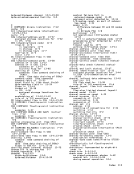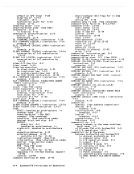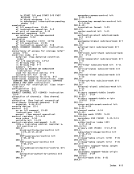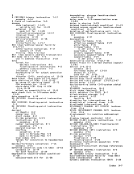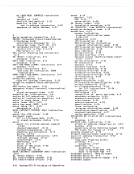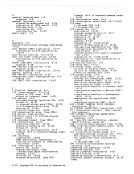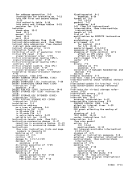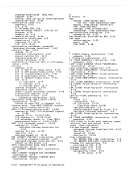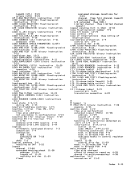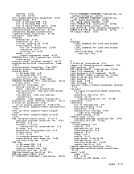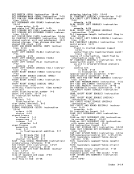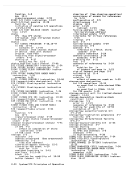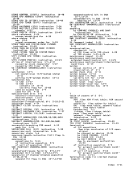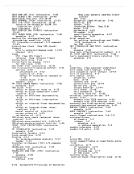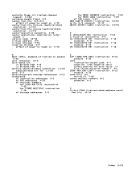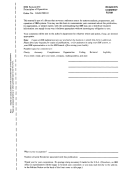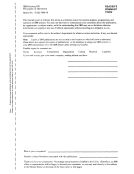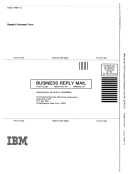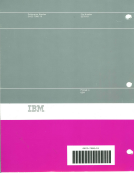General register designated by R3: 1////////////////1 CPU Address
o 16 31
Second-operand address:
////////////////////////
o 24 31
A serialization function is performed
before the operation begins and again
after the operation is completed.
When the order code is accepted and no
nonzero status is returned, condition
code0 is set. When status information
is generated by thisCPU or returned by
the addressedCPU, the status is placed
in general register Rt, and condition
code 1 is set.
When the access path to the addressedCPU is busy, or the addressed CPU is operational but in a state where it cannot respond to the order code, condi
tion code 2 is set.
When the addressedCPU is not opera
tional (that is, it is not provided in
the i nstallati on, it is not in the
configuration,it is in any of certain
customer-engineer test modes, or its
power is off), condition code 3 is set.
Resulting ConditionCode: o Order code accepted
1 Status stored
2 Busy
3 Not operational
Program Exceptions:
Operation (if the multiprocessing
facility is not installed)
Privileged operation
Programming Notes
1. A more detailed discussion of the
condition-code settings for SIGNALPROCESSOR is contained in the
section"CPU Signaling and
Response" inChapter 4, "Control."
2. To ensure that presently written
programs wi!! be executed properly
when new faci!ities using addi
tional bits are installed, only
zeros should appear in the unused
bit positions of the second-operand
address and in bit positions0-15 of general register R
3
• 3. Certain SIGNAL PROCESSOR orders are
provided withthe expectation that
they will be used primarily in
special circumstances. Such orders
may be implemented with the aid ofan auxiliary maintenance or service
processor, and, thus, the execution
time may take several seconds.
Unless all of the functions
provided by the order are required,
combinations of other orders, in
conjunction with appropriate
programming support, can be
expected to provide a specific
function more rapidly. The
emergency-signal, external-call,
and sense orders are the only
orders which are intended for
frequent use. The following orders
are intended for infrequent use,
and performance therefore may be
much slower than for frequently
used orders: IML, restart, start,
stop, stop and store status, and
all the reset orders.STORE CLOCK COMPARATOR [S] '8207' o 16 20 31
The current value of the clock compara
tor is stored at the doubleword location
designated by the second-operand
address.Zeros are provided for the rightmost bit
positions of the clock comparator that
are not compared with theTOO clock.
SpecialConditions The operand must be designated on a
doubleword boundary; otherwise, a spec
ification exception is recognized.Condition Code: The code remains
unchanged.
Program Exceptions:
Access (store, operand 2)
Operation (if theCPU-timer and
clock-comparator facility is
not installed)
Privileged operation
SpecificationChapter 10. Control Instructions 10-47
o 16 31
Second-operand address:
////////////////////////
o 24 31
A serialization function is performed
before the operation begins and again
after the operation is completed.
When the order code is accepted and no
nonzero status is returned, condition
code
is generated by this
the addressed
in general register Rt, and condition
code 1 is set.
When the access path to the addressed
tion code 2 is set.
When the addressed
tional (that is, it is not provided in
the i nstallati on, it is not in the
configuration,
customer-engineer test modes, or its
power is off), condition code 3 is set.
Resulting Condition
1 Status stored
2 Busy
3 Not operational
Program Exceptions:
Operation (if the multiprocessing
facility is not installed)
Privileged operation
Programming Notes
1. A more detailed discussion of the
condition-code settings for SIGNAL
section
Response" in
2. To ensure that presently written
programs wi!! be executed properly
when new faci!ities using addi
tional bits are installed, only
zeros should appear in the unused
bit positions of the second-operand
address and in bit positions
3
•
provided with
they will be used primarily in
special circumstances. Such orders
may be implemented with the aid of
processor, and, thus, the execution
time may take several seconds.
Unless all of the functions
provided by the order are required,
combinations of other orders, in
conjunction with appropriate
programming support, can be
expected to provide a specific
function more rapidly. The
emergency-signal, external-call,
and sense orders are the only
orders which are intended for
frequent use. The following orders
are intended for infrequent use,
and performance therefore may be
much slower than for frequently
used orders: IML, restart, start,
stop, stop and store status, and
all the reset orders.
The current value of the clock compara
tor is stored at the doubleword location
designated by the second-operand
address.
positions of the clock comparator that
are not compared with the
Special
doubleword boundary; otherwise, a spec
ification exception is recognized.
unchanged.
Program Exceptions:
Access (store, operand 2)
Operation (if the
clock-comparator facility is
not installed)
Privileged operation
Specification
























































































































































































































































































































































































































































